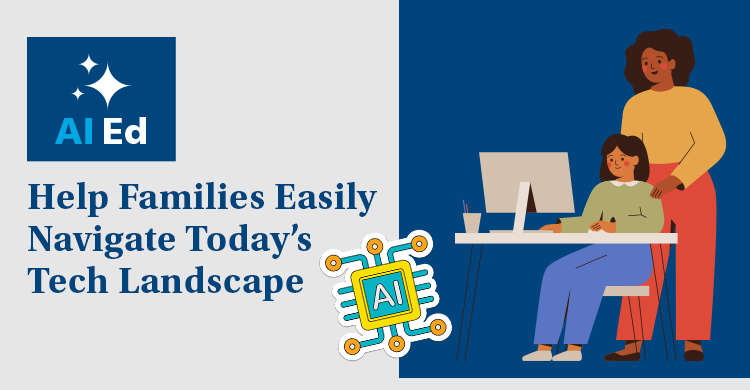Effective RTI in the classroom can seem overwhelming at times. As a current school leader, practitioner, and associate for Solution Tree, I am afforded the wonderful opportunity to work with educators, schools, and districts around the country. I am continually inspired by the commitment of the educators I work with and their sincere desire to improve. As I’ve visited schools and districts, I’ve noticed a common comment that occasionally arises while intervening in the classroom, which I’d like to refer to as the “if only” dilemma.
The dilemma goes something like this: when working with high school educators, I will occasionally hear statements like, “If only those middle-level educators would teach them the things they need to know, our job would be so much easier. The kids just hang out in the middle school classrooms taking selfies and drinking energy drinks! If they would learn the things they should at the middle level, we wouldn’t have to spend all of our time catching students up.”
Ironically, when working with middle-level educators, I will often hear a similar story. “If only those elementary schools would teach them the things they need to know, our job would be so much easier! They spend all of their time making hand turkeys! If they would just learn the things they should at the elementary level, we wouldn’t have to spend all of our time catching students up.”
An interesting thing happens when working with elementary schools. The dilemma varies slightly, but the theme is the same; they eat their own! Fifth grade blames the fourth grade, fourth grade blames the third, and so on. It didn’t take me long to figure out that the problem with learning and intervention is … kindergarten! Of course, I share this a bit tongue-in-cheek, but there is some slight discomfort in these descriptions, as we have most likely uttered a statement similar to these during our educational careers.
As educators, we can agree that some students will come into the classroom lacking the prerequisite skills needed to be successful. Hardworking teams then spend time attempting to “close the gap” while introducing students to new skills and curriculum. Often, in their frustration to accomplish these two challenging tasks, it becomes more or less convenient to blame the grade or school below for the student’s deficiencies. At this point, schools oftentimes will begin to explore intervention options. While this seems like a logical step, I’d like to share insight and lessons I’ve learned that could assist teams and put an end to the vexing “if only” dilemma.
Question 1 in the PLC process asks teams of educators to answer the question, “What do we want our students to know?” Nearly all educational researchers affirm what educators have been proclaiming for quite some time: there are too many standards to cover in the amount of time allotted during the school year. In an interview with Educational Leadership, educational researcher Robert Marzano asserts, “The sheer number of standards is the biggest impediment to implementing standards.” As a result, hardworking teams of teachers spend most of their day attempting to cover this mass of complex standards at an often superficial level. Giving curricular priority—that is, assigning levels of importance to each standard—is the first critical step of teams as they answer Question 1, but keep in mind, it is only the first step.
It is my experience that this is where the majority teams and schools stop in their quest to answer “What do students need to know?” They assign curricular priority to each standard and place the newly identified essential standards on a colorful poster to be placed in their classroom. Although a wonderful initial step to answering PLC Question 1, it is important to remember that it is just that—an initial step. The real work lies in gaining shared clarity in the essential standards.
Shared Clarity of Essential Standards
There are many processes for gaining shared clarity in the essential standards. This shared clarity is what allows teams to truly answer Question 1 and is the foundation for an effective, targeted RTI structure. Recently, a colleague of mine, Kris Cunningham, introduced an idea for gaining shared clarity on each essential standard that has resonated well with teams. This process is outlined below.
- Select an essential standard to deconstruct.
- Essential Vocabulary: Teams engage in conversations about the critical vocabulary that students will need to know in order to master the standard. This identified vocabulary is especially crucial to frontload prior to instruction for ELL students, students receiving special-education services, and students who traditionally struggle. Students will never be able to identify the theme of a text if they don’t understand what a theme is.
- Question Stems: Teams then engage in the process of developing three or four high-level question stems that could help the team or teacher determine if the student is proficient in the essential standard.
- Proficiency: Teams then move to the critical work of describing what a student who is proficient in the essential standard will know and be able to do. This should be written clearly, so there is no ambiguity among the team about what a proficient student will look like.
- Learning Targets: Teams then engage in the work of taking the essential standard and breaking it down into measurable pieces.
Most standards are complex, requiring multiple skills in order to be proficient. Take, for example, the following sixth-grade language arts standard:
6.RL.2 Determine a theme or central idea of a text and how it is conveyed through particular details; provide a summary of the text distinct from personal opinions or judgments.
This particular standard requires three separate skills for the student to know and be able to do:
- Determine the theme or central idea of a text.
- Determine how the theme is conveyed through details.
- Summarize the text distinct from their personal opinions or judgments.
Because of the complexity of standards, attempting to assess the entire standard can become challenging for a team. This is why it is of critical importance for teams to deconstruct each essential standard into measurable learning targets. This allows for teams to get down to the student and skill level, which is critical to intervening effectively.
So, here is the pearl of this blog: not until teams get to a deep level of clarity on the essential standards and have shared agreement of proficiency are they able to intervene effectively. Unless teams are able to get down to the student and skill level, their intervention efforts will be underproductive and often frustrating.
One of the most critical components of an effective intervention system begins with shared clarity on the essential standards. Once teams are able to gain shared clarity on the essential standards through deep, professional discussions centered on the identification and development of vocabulary, high-level question stems, clarifying proficiency, and the development of measurable learning targets, they will be able to effectively answer Question 1 in the PLC process, build the critical foundation for an effective RTI structure, and ensure that all students have the necessary skills at every level. We can then work to eliminate the “if only” dilemma once and for all and instead build systems of intervention that ensure students have the skills needed to be successful at every level of their educational careers.
References:
Cunningham, K., K–12 Math Coordinator, Washington County School District. St. George, Utah.
Scherer, M. How and Why Standards Can Improve Student Achievement: A Conversation with Robert J. Marzano. Educational Leadership, Sept. 2001. Vol. 59, pg 14–18, ASCD.
English Language Arts Core. https://www.uen.org/core/core.do?courseNum=4260.







